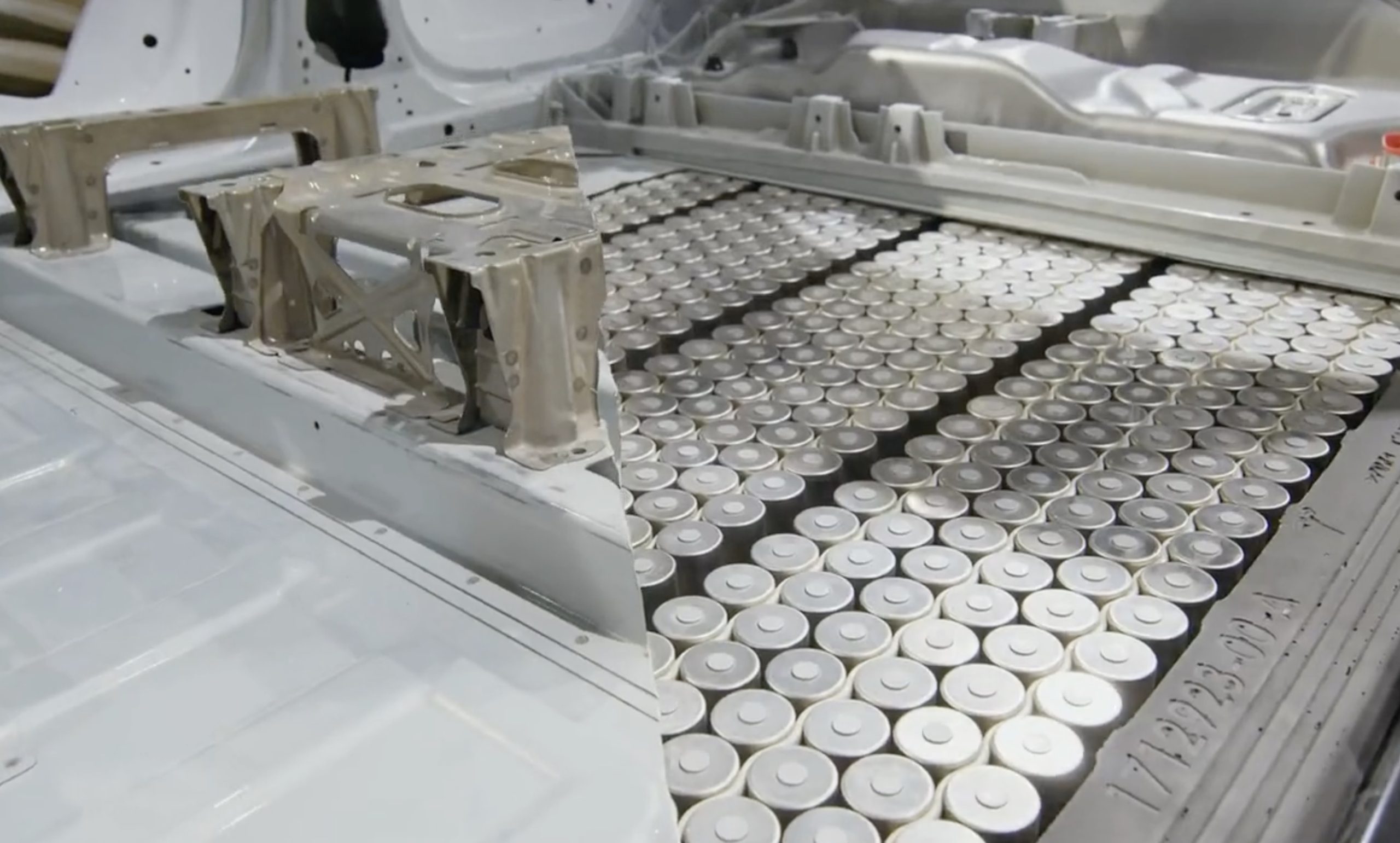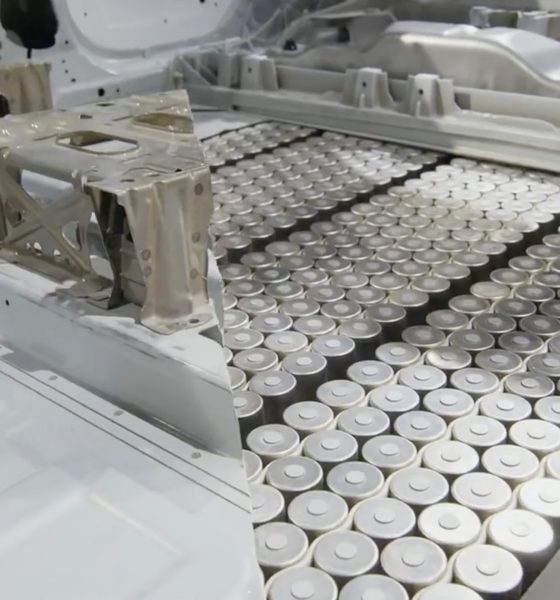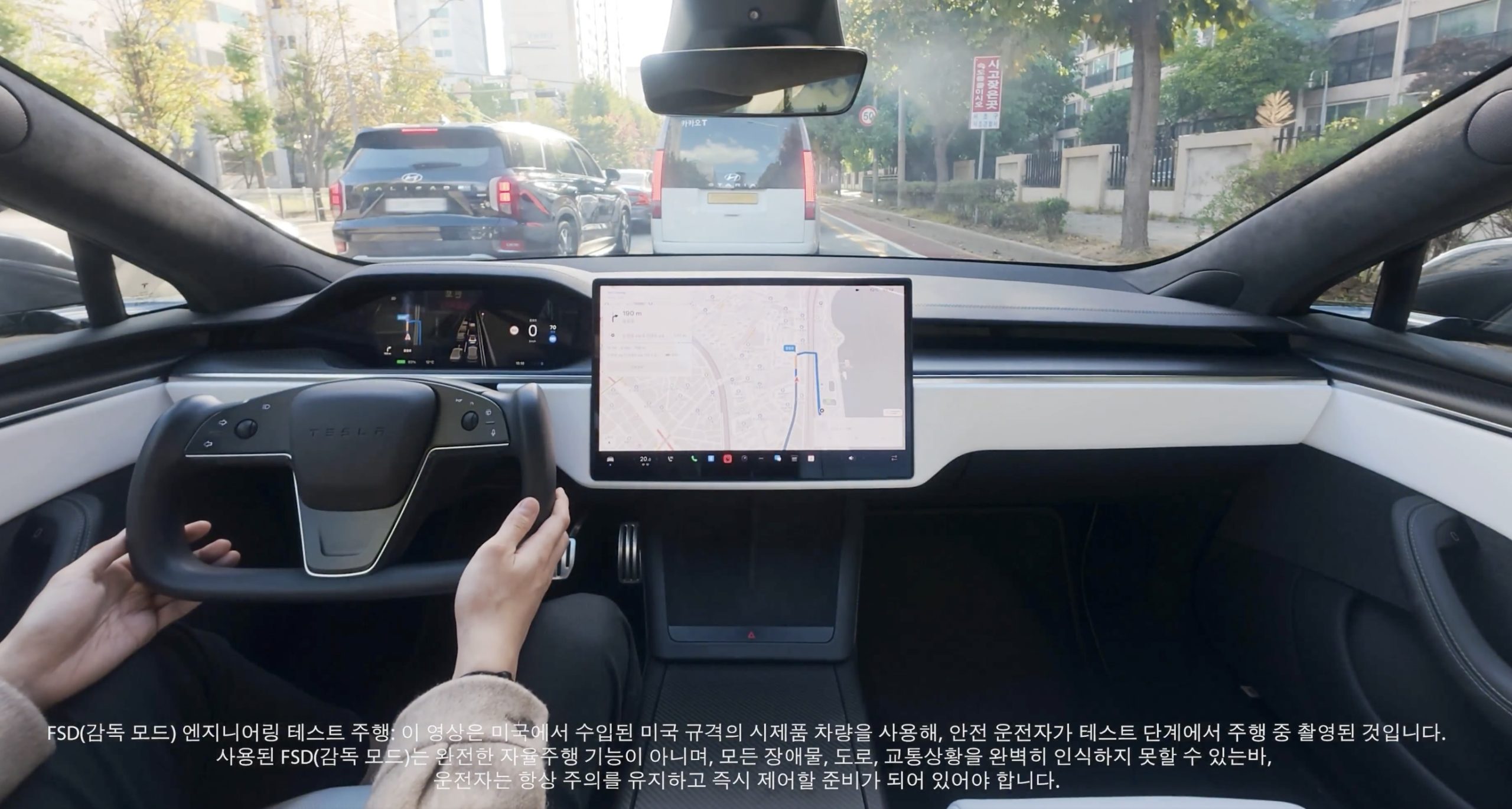

News
Tesla supplier sheds light on graphite supply challenge for EV battery manufacturers [Editorial]
Graphite is an essential part of a lithium-ion battery. There are many challenges that EV battery manufacturers might face in the graphite market as electric vehicle demand continues to rise.
Graphite is often an overlooked essential mineral when people think of EV batteries. However, it is a crucial component in the anodes of lithium-ion batteries used in electric vehicles.
Graphite and Transparency
The chief executive of Syrah Resources, Shaun Verner, shared a bit about graphite pricing and funding for new projects. Syrah Resources is an Australian company that supplies Tesla from its mine in Mozambique, one of the largest graphite producers.
Verner commented that the graphite market lacks transparency when it comes to pricing, leading bankers to hesitate when it comes to funding new graphite-related projects.
Only a handful of countries mine graphite and even fewer refine the mineral enough to be used in batteries and other products. With few producers in the graphite industry, graphite consumers enter into long-term bilateral supply agreements with little transparency on prices. In addition, relatively few analysts follow the graphite industry, making it difficult to get any long-term forecasts on graphite prices.
“The single biggest impediment to new investment is the opaque nature of the market because to get the commercial debt in place is really challenging,” said Verner.
Graphite Supply
Graphite prices have declined in recent months compared to the highs in early 2022. Fastmarkets reported that traditional graphite applications have decreased this year, resulting in “sluggish” conditions in the market. However, graphite demand is expected to rise in the next few years due to growth in the electric vehicle sector.
“Graphite has kind of been the poor cousin of the battery minerals and doesn’t get the attention of the other commodities,” commented Gregory Bowes, executive chairman of the Northern Graphite Corporation. “But we’re getting very close to an inflection point where demand overtakes supply and this is going to be first page news.”
Experts observing the graphite market expect graphite supply to hit a deficit as EV battery makers increase production. Fastmarkets estimates that natural graphite consumption would rise 40% year on year, on par with the EV sector. Benchmark Mineral Intelligence had the same forecast and calculated that graphite supply would hit a deficit of 20,000 tons in 2022.
China’s dominance in the graphite industry factors into the forecasted deficit since it dominates the graphite market. In 2021, China produced 820,000 metric tons (MT) of graphite, a significant increase compared to the previous two years. The US Geological Survey reported that China accounted for 79% of the world’s graphite mining last year. The country’s quick recovery from COVID-19 shutdowns contributed to its dominance in 2021.
“Chinese producers quickly increased production after a few months of closures in 2020. This allowed China to gain a more dominant position in the market for 2021 and slowed down the diversification of the supply chain,” noted the US Geological Survey’s report.
After China, Brazil and Mozambique are the next largest graphite producers. Brazil produced 68,000 MT last year, while Mozambique’s output was 30,000 MT. Russia, Madagascar, Ukraine, Norway, Canada, India, and Sri Lanka make up the remaining Top 10 countries that produce graphite.
Graphite and the Inflation Reduction Act
The graphite industry might be a major challenge for automakers seeking to launch their products in the United States over the next few years. The recently passed Inflation Reduction Act included EV tax credits that could go as high as $7,500 for automakers that adhere to a few specific requirements.
One of the requirements to qualify for the EV tax credit is related to batteries and the minerals used to make them. According to the Inflation Reduction Act, at least 40% of the critical minerals used to make US-made EV batteries must also come from US miners or recycling plants. Automakers can also qualify for the tax credit if the minerals used in their US-made batteries come from countries with free trade deals with the United States.
In 2021, natural graphite was not produced in the United States, but it consumed 45,000 tons of the mineral, estimated to be worth $41 million. The United States imported about 53,000 tons of graphite last year, mainly from China. It also imported graphite from Mexico, Canada, India, and other sources.
US Geological Survey mentioned one US automaker in its report about graphite imports. It did not mention the automaker by name.
“A US automaker continued building a large plant to manufacture lithium-ion electric vehicle batteries. The completed portion of the plant was operational, and it produced battery cells, battery packs, drive units, and energy storage products. At full capacity, the plant was expected to require 35,200 tons per year of spherical graphite for use as anode material for lithium-ion batteries,” stated the report.
Eric Desaulniers, the chief executive of Nouveau Monde Graphite, stated that discussions with cell manufacturers have ramped up after the Inflation Reduction Act was passed. Nouveau Monde is currently developing a graphite mine and battery-grade anode plant in Canada.
Desaulniers noted that challenges are ahead when it comes to securing project financing since “cell makers are cash-constrained.” He also noted that automakers had their hands full from scaling up their respective battery manufacturing facilities.
Tesla, considered the lead electric vehicle manufacturer in the United States, is already producing its 4680 battery cells in California. Rivian, General Motors, and other automakers also plan to develop their own battery cells in their own battery manufacturing plants.
The Teslarati team would appreciate hearing from you. If you have any tips, contact me at maria@teslarati.com or via Twitter @Writer_01001101.

News
Tesla Full Self-Driving lands in a new country, its 7th

Tesla Full Self-Driving has officially landed in a new country today, its seventh overall after it launched in both Australia and New Zealand earlier this year.
On Sunday, Tesla owners in South Korea reported that the company’s Full Self-Driving (Supervised) had started arriving in their vehicles. Owners reported that it was v14.1.4, which is not the latest version available in other countries, but is one of the most recent releases Tesla has deployed to drivers:
From 6 to 7
Tesla Full Self-Driving has launched in South Korea; the 7th country to have FSD https://t.co/X6gm1SyoxV
— TESLARATI (@Teslarati) November 23, 2025
This marks the seventh country in which Tesla has enabled its Full Self-Driving suite, following the United States and Puerto Rico, Canada, China, Mexico, Australia, and New Zealand.
Tesla launched Full Self-Driving most recently in Australia and New Zealand about three months ago. The expansion is a major breakthrough for the company as it aims to launch Full Self-Driving on a global scale.
However, the company’s biggest challenge thus far has been getting European regulatory agencies to handle the red tape that has inhibited Tesla from launching its semi-autonomous driving suite on the continent. Recently, it admitted that it sees a pathway through Dutch regulatory bodies, which seem to be the most willing to work with Tesla to get FSD in Europe.
Tesla Full Self-Driving appears to be heading to Europe soon
The company said that it has driven over 1 million kilometers safely on European roads across 17 different countries in internal testing. But its path to success will be by “partnering with the Dutch approval authority RDW to gain exemption for the feature. This involves proving compliance with existing regulations (UN-R-171 DCAS) + filing an exemption (EU Article 39) for yet-to-be-regulated behaviors like Level 2 systems off-highway, system-initiated lane changes with hands-off the wheel, etc.”
Perhaps the expansion into Europe will be the biggest challenge for Tesla, but it could also yield major results and advantages for the company moving forward. Tesla said it hopes to have FSD available in Europe sometime early next year.
For now, the expansion in South Korea is the latest win for Tesla and its self-driving efforts. In the U.S., it now turns its focus toward fully autonomous operation, as it works with state agencies to launch Robotaxi outside of Texas, California, and most recently, Arizona.
Elon Musk
Tesla CEO Elon Musk teases insane capabilities of next major FSD update

Tesla CEO Elon Musk teased the insane capabilities of the next major Full Self-Driving update just hours after the company rolled out version 14.2 to owners.
Tesla Full Self-Driving v14.2 had some major improvements from the previous iteration of v14.1.x. We were on v14.1.7, the most advanced configuration of the v14.1 family, before Tesla transitioned us and others to v14.2.
However, Musk has said that the improvements coming in the next major update, which will be v14.3, will be where “the last big piece of the puzzle finally lands.”
14.3 is where the last big piece of the puzzle finally lands
— Elon Musk (@elonmusk) November 21, 2025
There were some major improvements with v14.2, most notably, Tesla seemed to narrow in on the triggers that caused issues with hesitation and brake stabbing in v14.1.x.
One of the most discussed issues with the past rollout was that of brake stabbing, where the vehicle would contemplate proceeding with a route as traffic was coming from other directions.
We experienced it most frequently at intersections, especially four-way stop signs.
Elon Musk hints at when Tesla can fix this FSD complaint with v14
In our review of it yesterday, it was evident that this issue had been resolved, at least to the extent that we had no issues with it in a 62-minute drive, which you can watch here.
Some owners also reported a more relaxed driver monitoring system, which is something Tesla said it was working on as it hopes to allow drivers to text during operation in the coming months. We did not test this, as laws in Pennsylvania prohibit the use of phones at any time due to the new Paul Miller’s Law, which took effect earlier this year.
However, the improvements indicate that Tesla is certainly headed toward a much more sentient FSD experience, so much so that Musk’s language seems to be more indicative of a more relaxed experience in terms of overall supervision from the driver, especially with v14.3.
Musk did not release or discuss a definitive timeline for the release of v14.3, especially as v14.2 just rolled out to Early Access Program (EAP) members yesterday. However, v14.1 rolled out to Tesla owners just a few weeks ago in late 2025. There is the potential that v14.3 could be part of the coming Holiday Update, or potentially in a release of its own before the New Year.
News
Tesla Full Self-Driving v14.2 – Full Review, the Good and the Bad

Tesla rolled out Full Self-Driving version 14.2 yesterday to members of the Early Access Program (EAP). Expectations were high, and Tesla surely delivered.
With the rollout of Tesla FSD v14.2, there were major benchmarks for improvement from the v14.1 suite, which spanned across seven improvements. Our final experience with v14.1 was with v14.1.7, and to be honest, things were good, but it felt like there were a handful of regressions from previous iterations.
While there were improvements in brake stabbing and hesitation, we did experience a few small interventions related to navigation and just overall performance. It was nothing major; there were no critical takeovers that required any major publicity, as they were more or less subjective things that I was not particularly comfortable with. Other drivers might have been more relaxed.
With v14.2 hitting our cars yesterday, there were a handful of things we truly noticed in terms of improvement, most notably the lack of brake stabbing and hesitation, a major complaint with v14.1.x.
However, in a 62-minute drive that was fully recorded, there were a lot of positives, and only one true complaint, which was something we haven’t had issues with in the past.
The Good
Lack of Brake Stabbing and Hesitation
Perhaps the most notable and publicized issue with v14.1.x was the presence of brake stabbing and hesitation. Arriving at intersections was particularly nerve-racking on the previous version simply because of this. At four-way stops, the car would not be assertive enough to take its turn, especially when other vehicles at the same intersection would inch forward or start to move.
This was a major problem.
However, there were no instances of this yesterday on our lengthy drive. It was much more assertive when arriving at these types of scenarios, but was also more patient when FSD knew it was not the car’s turn to proceed.
Can report on v14.2 today there were ZERO instances of break stabbing or hesitation at intersections today
It was a significant improvement from v14.1.x
— TESLARATI (@Teslarati) November 21, 2025
This improvement was the most noticeable throughout the drive, along with fixes in overall smoothness.
Speed Profiles Seem to Be More Reasonable
There were a handful of FSD v14 users who felt as if the loss of a Max Speed setting was a negative. However, these complaints will, in our opinion, begin to subside, especially as things have seemed to be refined quite nicely with v14.2.
Freeway driving is where this is especially noticeable. If it’s traveling too slow, just switch to a faster profile. If it’s too fast, switch to a slower profile. However, the speeds seem to be much more defined with each Speed Profile, which is something that I really find to be a huge advantage. Previously, you could tell the difference in speeds, but not in driving styles. At times, Standard felt a lot like Hurry. Now, you can clearly tell the difference between the two.
It seems as if Tesla made a goal that drivers should be able to tell which Speed Profile is active if it was not shown on the screen. With v14.1.x, this was not necessarily something that could be done. With v14.2, if someone tested me on which Speed Profile was being used, I’m fairly certain I could pick each one.
Better Overall Operation
I felt, at times, especially with v14.1.7, there were some jerky movements. Nothing that was super alarming, but there were times when things just felt a little more finicky than others.
v14.2 feels much smoother overall, with really great decision-making, lane changes that feel second nature, and a great speed of travel. It was a very comfortable ride.
The Bad
Parking
It feels as if there was a slight regression in parking quality, as both times v14.2 pulled into parking spots, I would have felt compelled to adjust manually if I were staying at my destinations. For the sake of testing, at my first destination, I arrived, allowed the car to park, and then left. At the tail-end of testing, I walked inside the store that FSD v14.2 drove me to, so I had to adjust the parking manually.
This was pretty disappointing. Apart from parking at Superchargers, which is always flawless, parking performance is something that needs some attention. The release notes for v14.2. state that parking spot selection and parking quality will improve with future versions.
Any issues with parking on your end? 14.1.7 didn’t have this trouble with parking pic.twitter.com/JPLRO2obUj
— TESLARATI (@Teslarati) November 21, 2025
However, this was truly my only complaint about v14.2.
You can check out our full 62-minute ride-along below:








